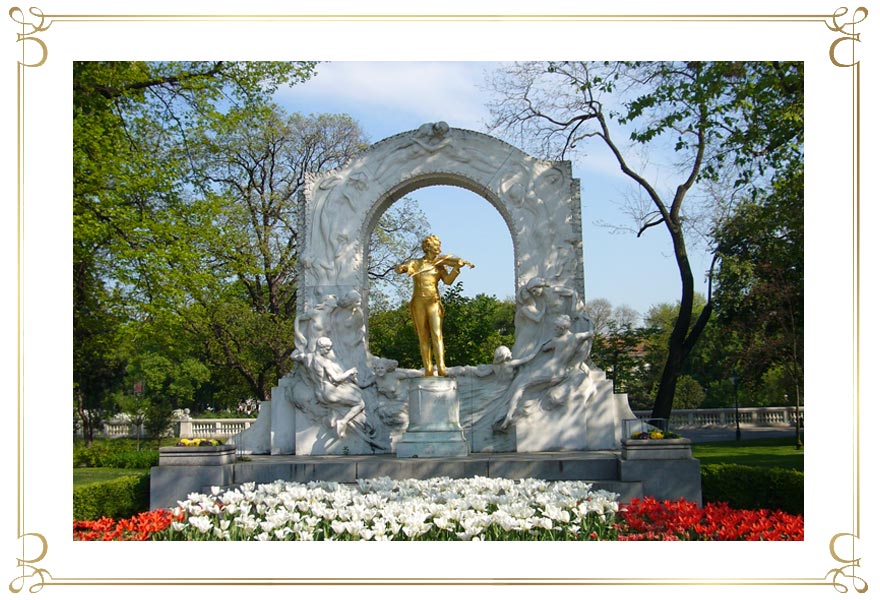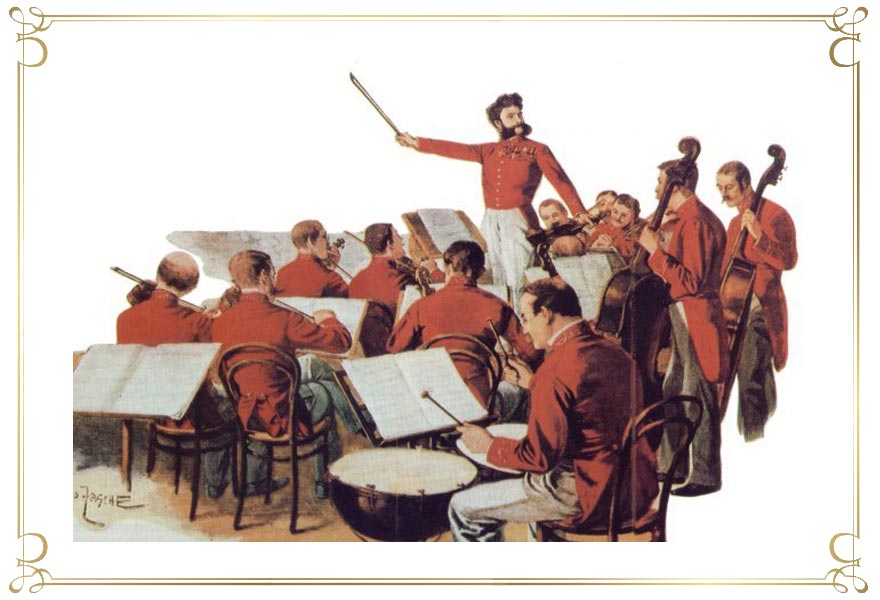For years Johann Strauss hesitated to write operettas, as he wasn’t sure that he could live up to the task. However, Jetty pressed him to do so and eventually accomplished her goal:
1871 saw the premiere of “Indigo and the 40 Thieves“ , Strauss’ first operetta, in the Theatre an der Wien. The audience in the sold out theatre was enraptured and Johann Strauss had discovered a new terrain and loved it. Many of his following operettas have become immortal and unforgettable.
“Die Fledermaus” has become the worldwide most performed operetta of all time. The premiere in 1874 in the Theatre an der Wien celebrated Johann’s 30th public performance anniversary. In the German language the title of the song “Glücklich ist, wer vergisst, was nicht zu ändern ist“ (happy who forgets what you can’t change) has become a common proverb.
Other well known Johann Strauss operettas that are still popular today include “Eine Nacht in Venedig” (A Night in Venice, 1883) and „Der Zigeunerbaron“ (The Gypsy Baron), that premiered in 1885, one night before Johann’s 60th birthday.
Towards the end of his life Johann Strauss fulfilled one of his life-long dreams: he wanted to prove to himself and the world that he was capable of writing “serious“ music.
New Year’s Day 1898 then saw the premiere of his opera “Ritter Pasman” (The Knight Pasman) at the Vienna Opera.
In the late fall of 1898 he completed the rough version of his ballet “Aschenbrödel”(Cinderella), however he didn’t live to see the premiere.
In May 1899 Johann Strauss fell ill and suffered from a severe cold and a gastrointestinal illness. During an ensuing pneumonia in June he fell into unconsciousness.
He must have felt that his life was coming to an end – his wife heard him humming – in his rare awake moments – the melody from the song: “Brüderlein fein, ‘s muss geschieden sein” (Little brother it’s time to part). This song about saying farewell and death – that is well known even today – was written by his former music teacher Joseph Drechsler.
Johann died on Saturday June 3rd shortly after 4 pm in the arms of Adele.
His last journey was the procession through Vienna; his coffin was carried from Igelgasse, past the Theatre an der Wien to the protestant church in the Dorotheergasse for the consecration. Then he was escorted to the Zentralfriedhof(Central Cemetary), passing the Hofoper (Court Opera) and the Musikverein building.
Johann Strauss’ grave is close by other musical geniuses such as Beethoven, Schubert, and Brahms.




